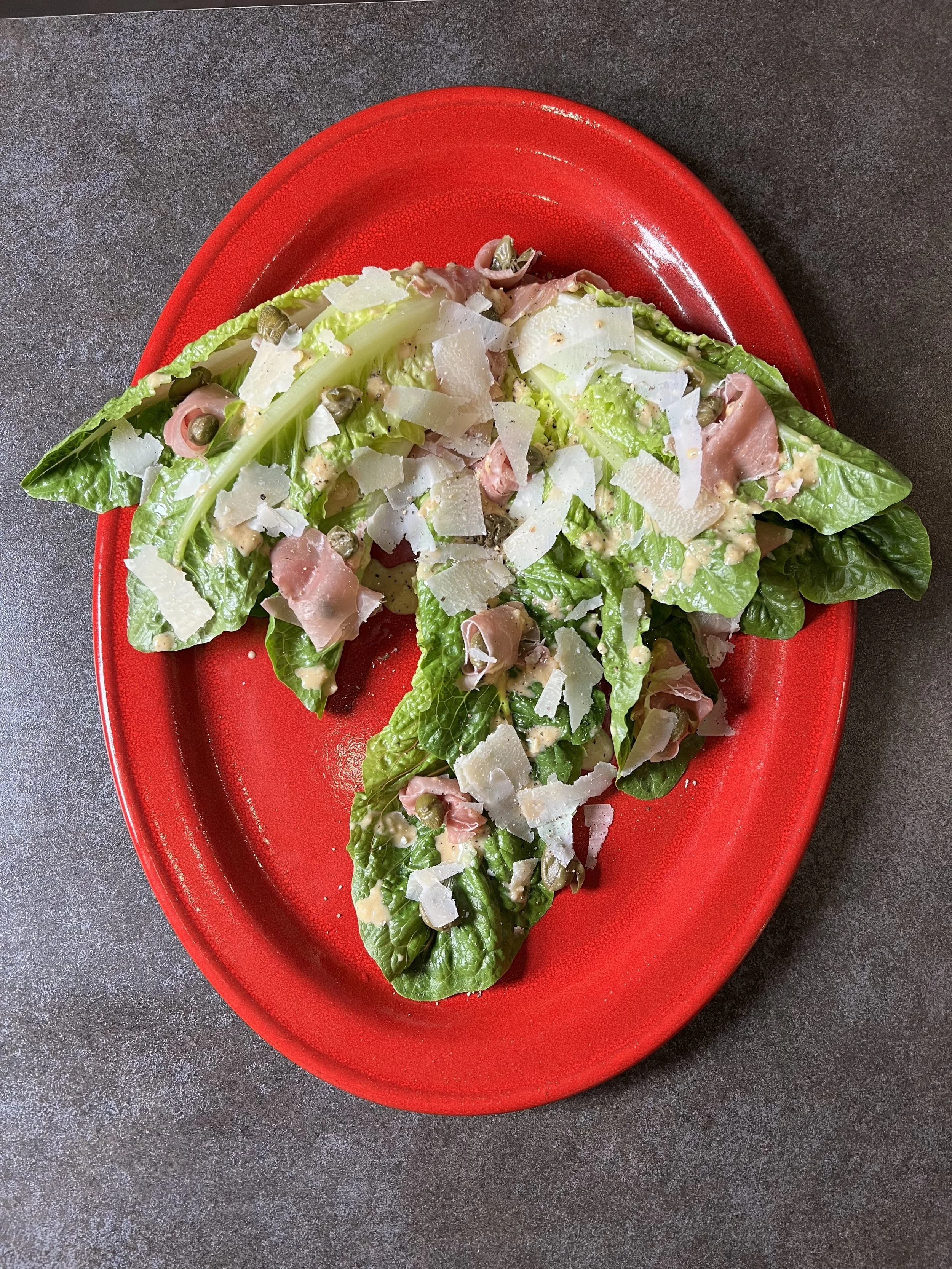Caesar Salad Dressing
Caesar is the most popular dressing at our house. We use it on salad, obviously, but also on Brussel sprouts, asparagus and sandwiches. Something about its creamy, tangy goodness is hard to beat. But as we’ve found in a lot of sauces and dressings, hidden inside most store-bought and restaurant-made versions is a lot of dairy, low quality oils, sugar and, most surprisingly, wheat. Many brands use Romano cheese to create the creaminess, plus spoonfuls of sugar and empty crap like soybean oil and modified corn starch to make it taste good. There’s more. Worcestershire sauce, often known by the original brand name Lea & Perrins, is also a key ingredient adding rich umami flavour. We only learned recently that most Wocestershire includes malt vinegar, which contains enough wheat to bother celiacs.
We knew we could do better without compromising the deliciousness. Starting with a vegan, garlic-heavy Stuart-family caesar, we develop more creaminess by putting the eggs back in and emulsifying them with quality oil and generous amounts of parmesan. Using quality mustard, oil and other ingredients means we don’t have to create flavour with sugar and fillers. A replacement for Lea & Perrins proved tougher, but we eventually found Wizards, a gluten-free Worcestershire sauce that does the trick. This recipe is super creamy and rich with a nice bite that makes salad and veggies sing.
Ingredients
2 eggs
1 teaspoon Dijon mustard
¼ teaspoon of anchovy paste
3 tablespoon fresh lemon juice (the equivalent of the juice of one lemon)
1 T gluten-free Worcestershire sauce
1 large clove garlic
1/2 t of salt
1/2 t pepper
1/3 cup olive oil
1/2 cup of aged Parmesan cheese
Directions
Break parmesan into one inch cubes to help with blending.
Add ingredients into a blender container, breaking the parmesan into one centimetres chunks to help with blending.
Blend on high until the dressing becomes creamy, smooth and chunk-free.
Toss on piles of Romaine lettuce, roasted Brussel sprouts or just drink right from the jar.
Store in the fridge for a maximum of a week. Don’t test those raw eggs.

